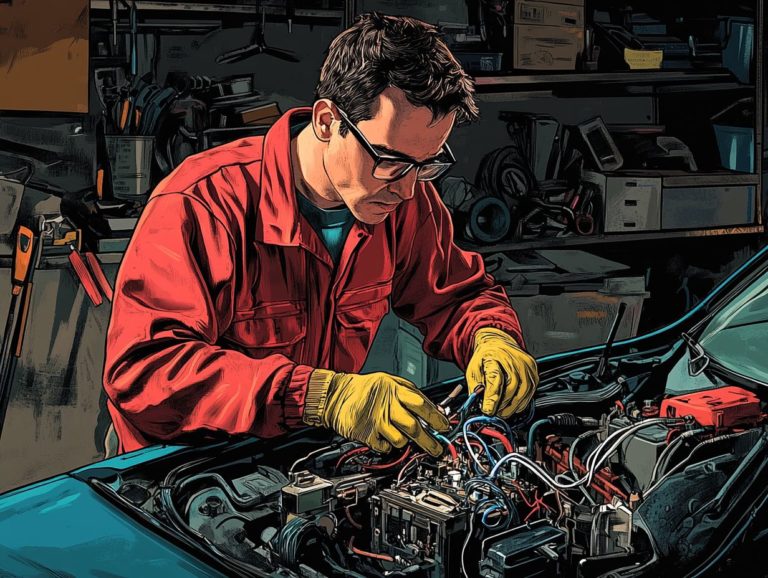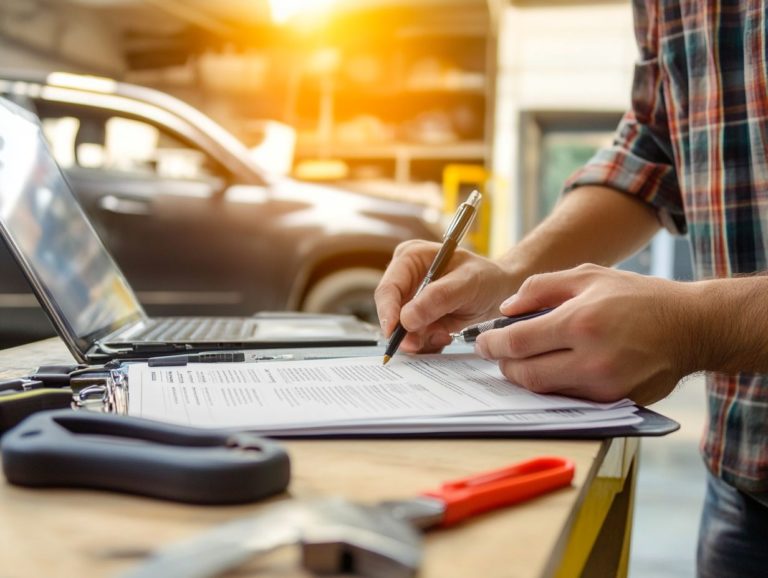What Are the Signs of a Failing Clutch?
Understanding your vehicle’s clutch system is essential for ensuring smooth driving and optimal performance. This article delves into the key components and functions of a clutch, highlighting the common signs that may signal potential failure.
You ll discover the various causes of clutch problems, along with diagnostic steps to pinpoint the issue, and explore options for repair or replacement. You will also find valuable tips to help prevent clutch issues from arising in the future.
Whether you re a seasoned driver or just starting your journey behind the wheel, this guide provides insights to keep your vehicle running at its best.
Contents
Key Takeaways:
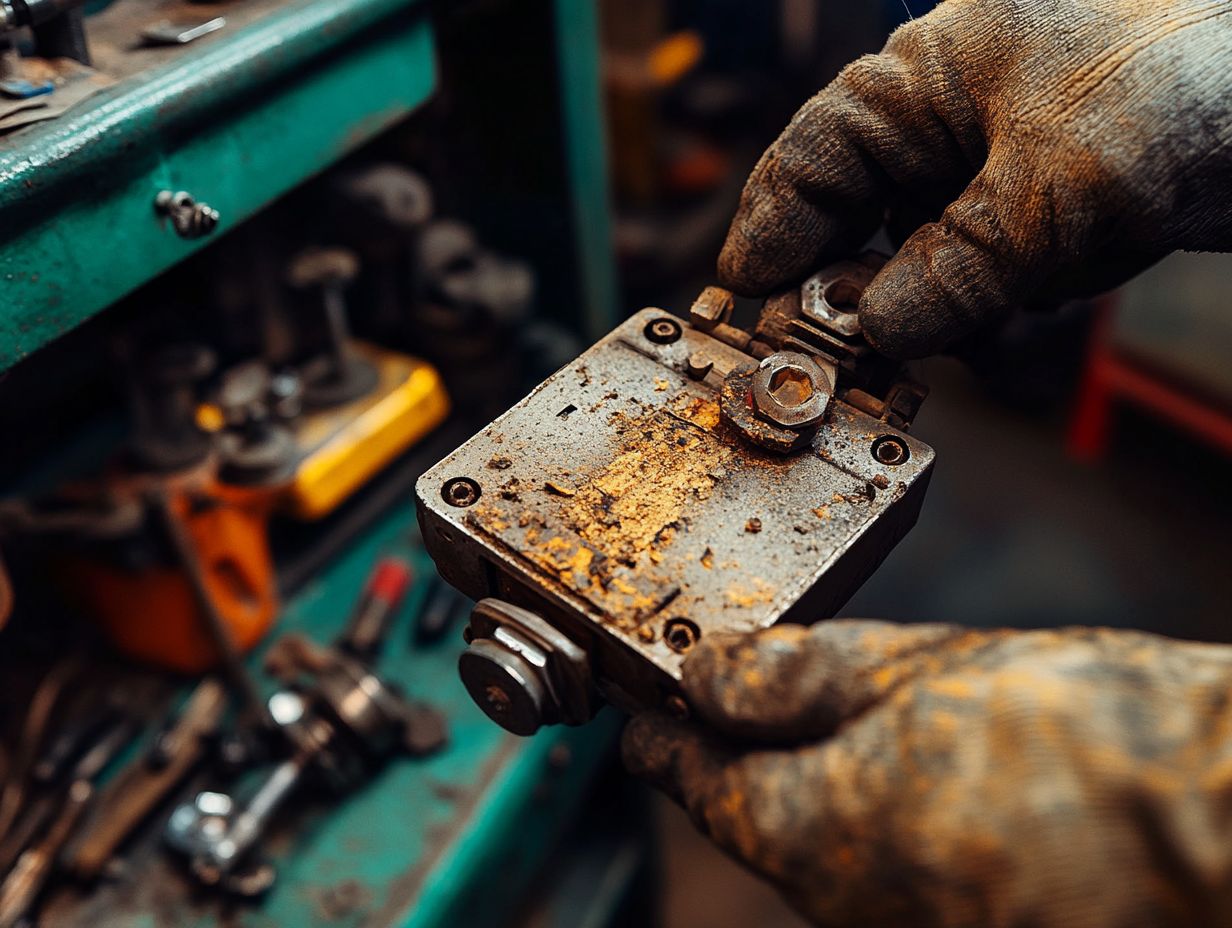
- A failing clutch can be identified by symptoms such as difficulty shifting gears, slippage, and strange noises.
- Common causes include wear and tear, improper maintenance, and using the clutch as a footrest.
- Regular maintenance and proper care can help prevent clutch failure, saving you money and avoiding potential accidents on the road.
Understanding the Clutch System
The clutch system is a pivotal component in vehicles with a manual transmission. It lets you engage and disengage engine power from the wheels smoothly.
This assembly operates through several components, including the clutch pedal, pressure plate, clutch plate, and flywheel, all working together to ensure smooth gear shifts.
For car enthusiasts like you, grasping the nuances of the clutch system is crucial, as it significantly influences your driving experience and the overall performance of your vehicle.
Whether you re behind the wheel of a Jeep Wrangler or a Subaru, appreciating the clutch system’s importance is essential for optimal vehicle operation and maintenance.
Components and Function
The clutch system comprises several essential components: the clutch pedal, pressure plate, friction plate, and flywheel. Each plays a vital role in its functionality.
These parts work together to ensure smooth gear shifts while you navigate the road. Pressing the clutch pedal disconnects engine power from the transmission, allowing for effortless gear changes.
However, if components like the pressure plate or friction plate wear down or malfunction, you might encounter issues such as slipping or grabbing, making gear shifting difficult. Therefore, understanding how these parts interact is vital for maintaining your vehicle’s performance and your safety on the road.
Common Signs of a Failing Clutch
Recognizing signs of a failing clutch is crucial for your vehicle’s performance and your safety. Symptoms like a grinding noise or a burning smell indicate serious issues. Ignoring these signs could lead to total clutch failure, leaving you in a lurch!
When these transmission troubles arise, it s essential to consult a qualified mechanic who can diagnose the problem and suggest appropriate repair options.
Symptoms to Look Out For
When it comes to clutch issues, be vigilant for several symptoms, such as a persistent grinding noise when shifting gears or an unusual burning smell.
These indicators can signal underlying problems that compromise your vehicle’s performance. A grinding noise often surfaces when the gears struggle to engage, typically due to wear on the clutch disc or pressure plate. Ignoring this could lead to more significant transmission problems.
Similarly, a burning odor might suggest that the friction material is overheating, often worsened by aggressive driving habits like rapid acceleration or sudden stops. Consistent engagement in these behaviors puts additional strain on the clutch system, accelerating its deterioration and leading to costly repairs.
Stay informed about your vehicle’s clutch system for a safer drive!
Possible Causes of a Failing Clutch
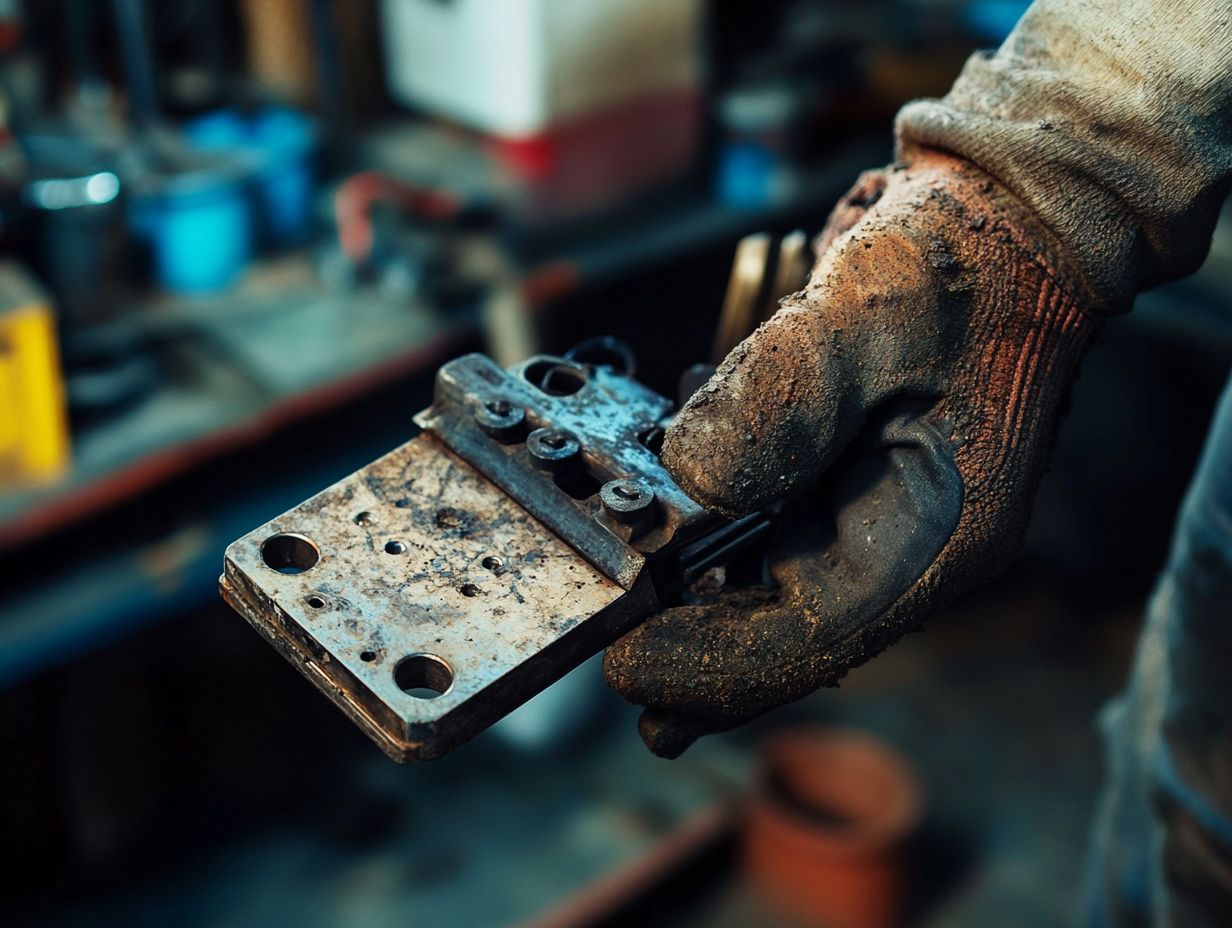
Neglecting maintenance speeds up clutch wear. Regular care prevents this damage.
Your driving habits affect how long your clutch lasts. Be mindful of how you drive.
Wear and Tear, Improper Maintenance, and Other Factors
Wear and tear is inevitable in vehicle operation. However, neglecting maintenance can lead to premature failure.
As time passes, various factors contribute to clutch degradation, affecting its efficiency. Regular inspections and proper maintenance practices like timely fluid changes and ensuring that the clutch cable (the wire that connects the pedal to the clutch mechanism) is correctly adjusted help extend its lifespan.
Avoid excessive slipping during gear changes. Engage the clutch smoothly to minimize strain. Being aware of your driving habits helps too. Avoid aggressive starts and unnecessary idling.
Embrace these strategies! You’ll keep your clutch strong and your vehicle reliable for years.
How to Diagnose a Failing Clutch
To diagnose a failing clutch, observe symptoms closely. This helps identify the problem quickly. It often requires a qualified mechanic’s expertise.
Steps to Identify the Issue
Identifying issues with a failing clutch starts with keen observation. Look for symptoms and perform tests to diagnose accurately.
Pay attention to changes in gear shifting. Note any difficulties engaging or disengaging the clutch, or unusual noises when pressing the pedal. After recognizing these symptoms, conduct RPM checks (which stands for revolutions per minute, measuring engine speed) during gear shifts. Look for unexpected spikes or drops in RPMs. A visual inspection of the clutch components can also reveal signs of wear or damage.
If these steps don t lead you to the problem or if you feel uncertain, consult a qualified mechanic for a thorough evaluation. They have the tools and expertise to address any underlying issues.
Repairing or Replacing a Failing Clutch
When you notice clutch problems, act quickly! Delaying repairs can lead to more costly issues down the road.
You have options for addressing damaged components, often depending on the severity of the issues.
Options and Costs
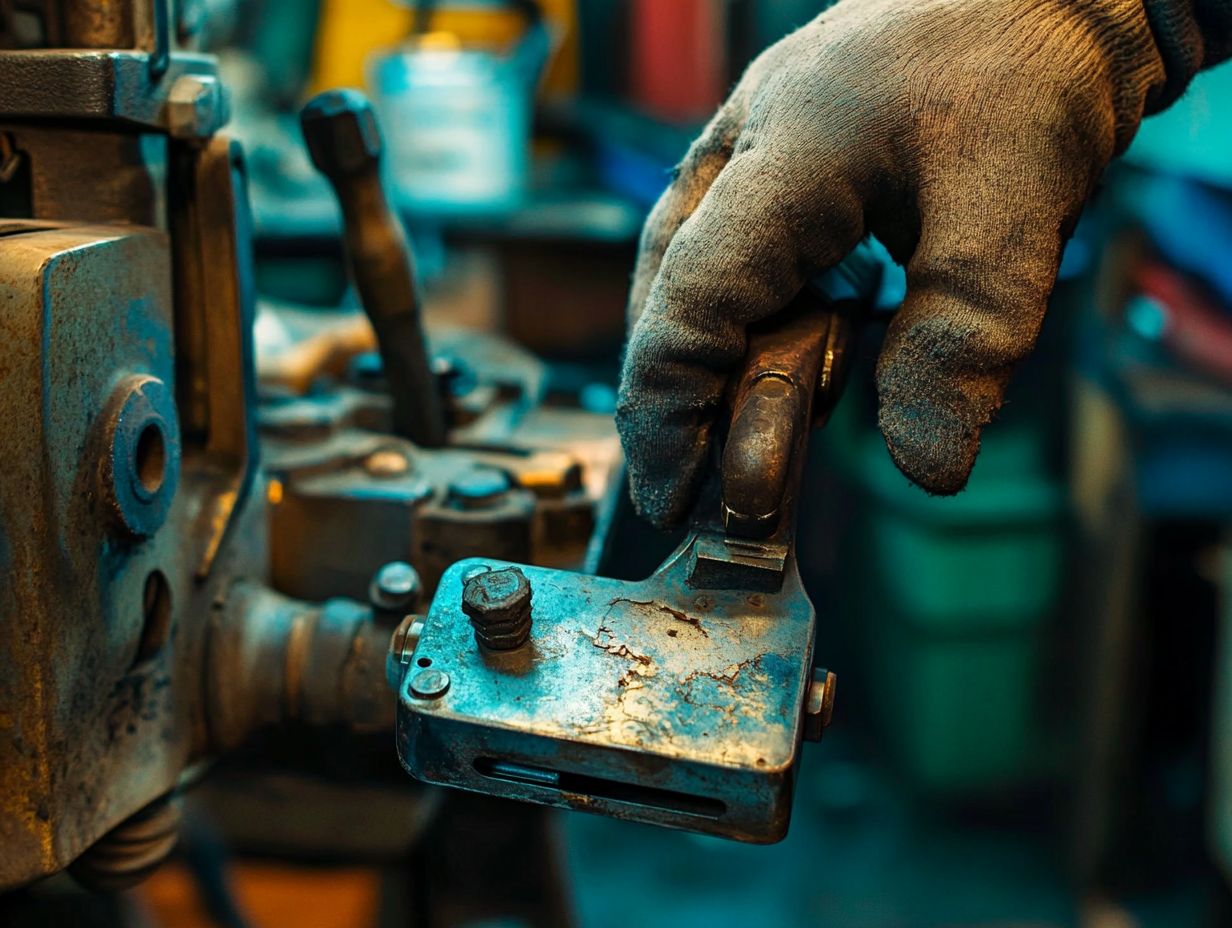
Typically, you can either repair the existing components or replace them entirely. Each choice has its own costs and implications.
Factors such as the age and make of your vehicle, the extent of the damage, and local labor costs will influence your decision. A mechanic s expertise is invaluable in this process; they can help determine whether a simple repair will suffice or if a full replacement is necessary for long-term reliability.
The availability of parts can also affect your expenses. Consider potential upgrades that could benefit you in the future. By proactively addressing clutch issues, you can save significantly on maintenance costs.
Tips for Preventing Clutch Failure
Preventing clutch failure means regular maintenance and smart driving. These simple steps keep your clutch in top shape.
Maintenance and Care Recommendations
Maintenance and care for your vehicle’s clutch are essential to prevent clutch failure. Good driving habits can help enhance its longevity.
Regularly check and replace the transmission fluid, the fluid that helps your car’s gears operate smoothly. Clean fluid reduces wear and tear on your clutch. Avoid holding the clutch pedal down unnecessarily when stopped, as this can put strain on the clutch plate.
When on an incline, resist the temptation to use the clutch to hold your vehicle in place. Instead, engage the handbrake for added security.
Practicing smooth gear transitions and steering clear of rapid acceleration not only boosts your fuel efficiency but also helps preserve your clutch.
By incorporating these straightforward yet impactful habits into your driving routine, you ll save money and avoid headaches by taking care of your clutch now!
Frequently Asked Questions
What Are the Signs of a Failing Clutch?
Some signs that your clutch may be failing include difficulty shifting gears, a burning smell, and a slipping clutch pedal. Similarly, you should also be aware of the signs of a failing fuel pump to ensure your vehicle runs smoothly.
How do I know if my clutch is failing?
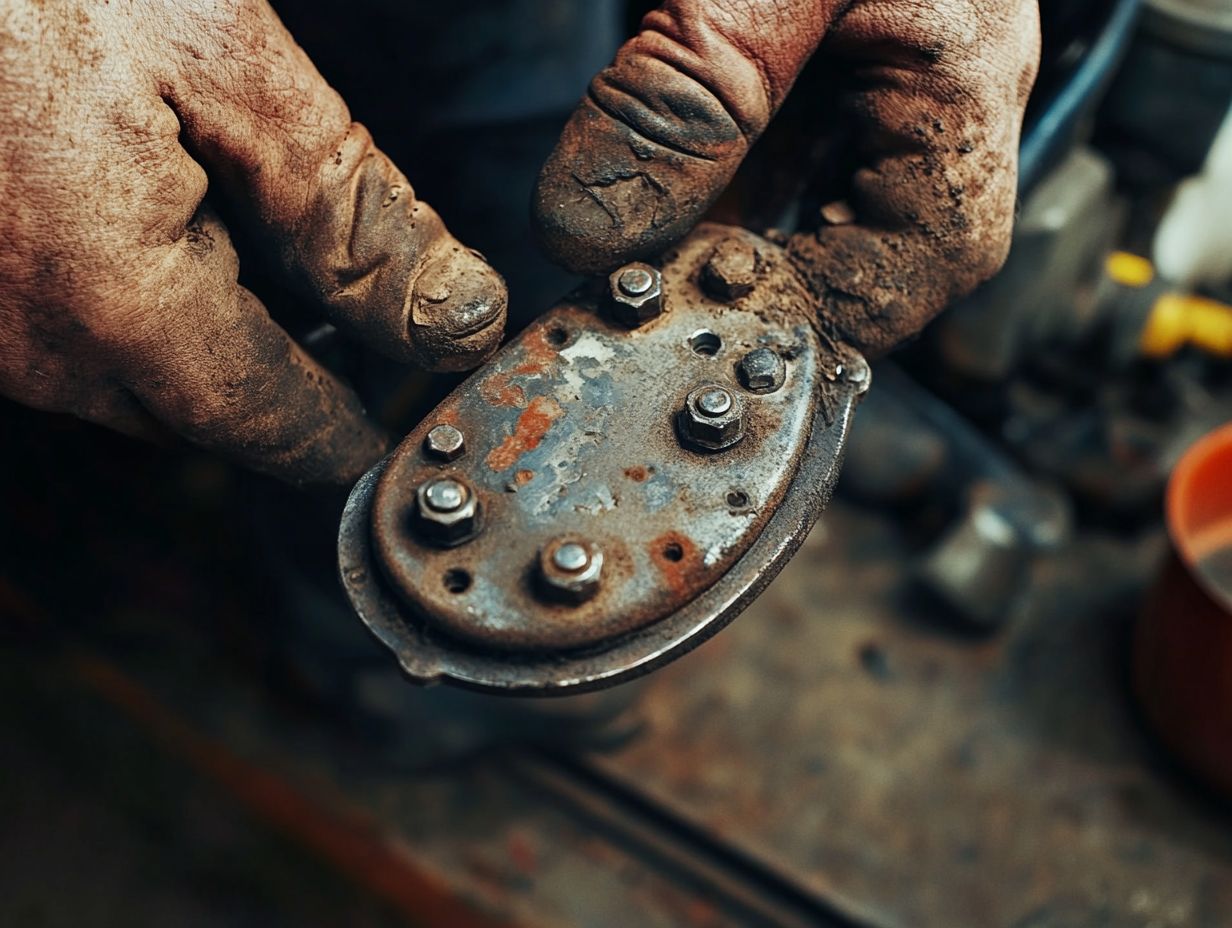
You may notice difficulty shifting gears, a burning smell, and a slipping clutch pedal. These are all signs that your clutch may be failing.
What causes a failing clutch?
A failing clutch can be caused by a worn clutch disc, a damaged pressure plate, or a leak in the hydraulic system.
Can a failing clutch be repaired?
In most cases, a failing clutch can be repaired by replacing the worn or damaged components.
What happens if I continue to drive with a failing clutch?
If you continue to drive with a failing clutch, it can cause further damage to your transmission and lead to more expensive repairs.
How often should I have my clutch checked?
It is recommended to have your clutch checked every 50,000 to 100,000 miles. If you notice any signs of a failing clutch, get it checked immediately!


